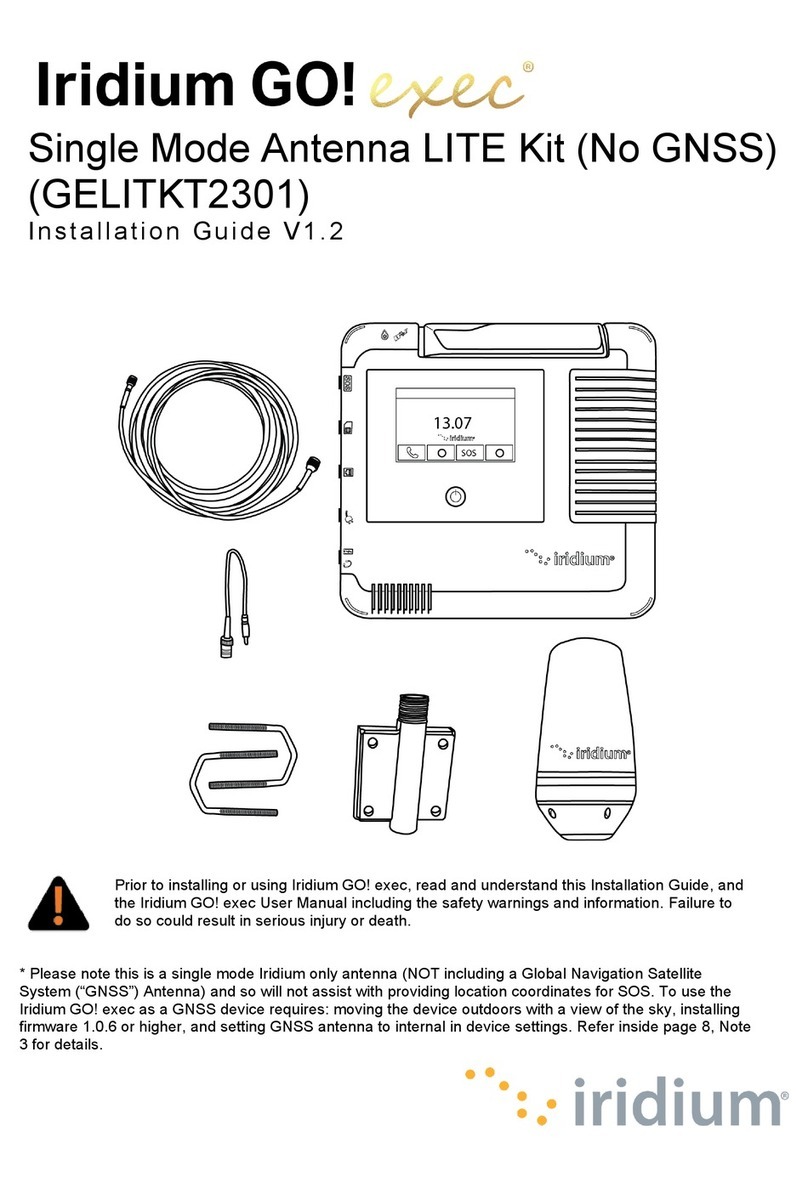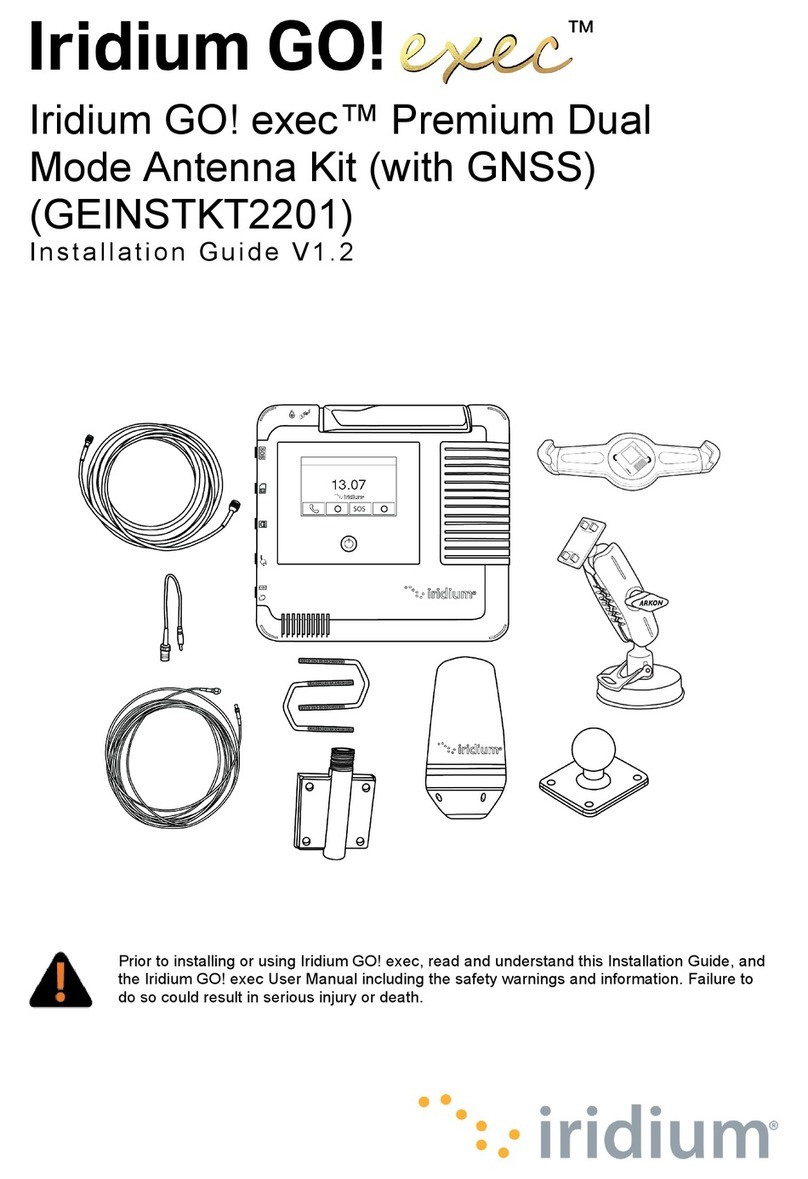ii Iridium Pilot™ Installation Guide
Legal Notices
This Installation Guide provides installation information and is provided “as is.” Iridium and its aliated
companies, directors, ocers, employees, agents, trustees or consultants (“Iridium”) assume no responsibility
for any typographical, technical, content or other inaccuracies in this Installation Guide. Iridium reserves the
right to revise this Installation Guide or withdraw it at any time without prior notice. You can nd the current
version of this Iridium Pilot™ Installation Guide at www.iridium.com.
Your Iridium Pilot is subject to a Limited Warranty, Limitations, Exclusions, and Terms and Conditions, which
were included in the packaging with your Iridium Pilot, and which can also be found in the Appendices to this
Installation Manual, and in your User Manual. If there are discrepancies in the wording of the Limited Warranty,
that version associated with the User Manual is controlling. You are permitted to use Iridium Pilot only as
described and specied in this Installation Guide, the User Manual, and the Limited Warranty. By using the
Iridium Pilot, you are indicating that you agree to comply with the terms set forth in this Installation Guide as
well as the User Manual, including without limitation the Limited Warranty, including the section describing
permitted use of Iridium Pilot (the “Conditions of Use”). If you fail to comply with the Limited Warranty and
the Conditions of Use, Iridium may void certain protections oered under the Limited Warranty and Iridium
reserves the right to terminate your right to use Iridium Pilot on the Iridium system. If you do not accept the
terms of the Limited Warranty and Conditions of Use, do not use Iridium Pilot.
Prior to Installing Iridium Pilot, read and understand this Installation Guide and the User Manual,
including the safety warnings and information. Failure to do so could result in serious injury or death.
If you do not have the Iridium Pilot User Manual, it can be found at www. iridium.com or call 1-866-947-4348
and request that a User Manual be sent to you.
Third Party Information
This Installation Guide might refer to third party sources of information, hardware or software, products
or services and/or third party web sites (“third party information”). Iridium does not control, and is not
responsible for, any third party information, including without limitation the content, accuracy, copyright
compliance, compatibility, performance, trustworthiness, legality, decency, links, or any other aspect of third
party information. The inclusion of such third party information does not imply endorsement by Iridium of
the third party information. ANY THIRD PARTY INFORMATION THAT IS PROVIDED WITH IRIDIUM’S FACILITIES,
SERVICES, PRODUCTS OR USER INFORMATION IS PROVIDED “AS IS”. IRIDIUM MAKES NO REPRESENTATIONS,
GUARANTEES OR WARRANTIES IN RELATION TO THIRD PARTY INFORMATION AND IRIDIUM SHALL NOT BE
LIABLE FOR ANY LOSSES, DAMAGES, LIABILITIES, JUDGMENTS, AND FINES, AMOUNTS PAID IN SETTLEMENT,
EXPENSES OR COSTS OF DEFENSE SUSTAINED IN RELATION TO ANY SUCH THIRD PARTY INFORMATION.
Intellectual Property, Trade Secret, Proprietary or Copyrighted Information
To protect Iridium proprietary and condential information and/or trade secrets, this Installation Guide may
describe some aspects of Iridium technology in generalized terms. Iridium products may include copyrighted
Iridium and third party software. Any such copyrighted software contained in Iridium products may not be
modied, reverse engineered, distributed or reproduced in any manner to the extent provided by law. The
purchase of any Iridium products shall not be deemed to grant either directly or by implication or otherwise, any
license under copyrights, patents, or patent applications of Iridium or any third party software provider, except for
the normal, nonexclusive, royalty free license to use that arises by operation of law in the sale of a product.
Content Copyright
You are exclusively responsible for the use of Iridium Pilot, including proper use of third party copyrighted
materials. If you violate these terms, you agree to defend, indemnify and hold Iridium harmless with respect to
any claims or actions by third parties related to your improper use of copyrighted material and to pay all costs,
damages, nes and other amounts incurred by Iridium, or on its behalf, in the defense of any such claims or actions.






























